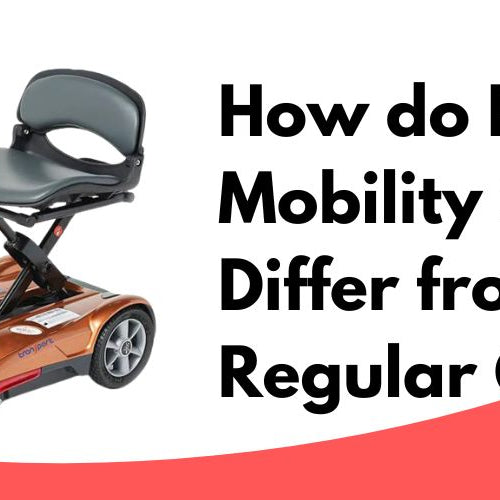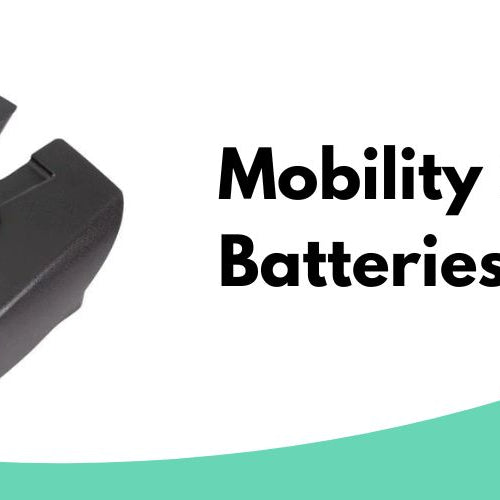Hoyer lifts are essential pieces of equipment for caregivers, providing a safe and efficient method for transferring patients with limited mobility. A full body sling is a crucial component of the Hoyer lift system, allowing the user to be comfortably and securely suspended during the transfer process. Understanding how to properly use a Hoyer lift full body sling is key to ensuring a smooth and comfortable experience for both the caregiver and the patient.
To begin, it is important to select the right size and style of sling for the individual's specific needs. A full body U-sling, for example, offers support for the head, torso, and thighs, making it suitable for patients who require additional support. Proper positioning of the sling is vital, as it ensures the patient's weight is evenly distributed during the transfer. This can be accomplished by folding the sling in half lengthwise, sliding it under the patient, and then unfolding it so that it covers the entire length of the patient's body. The leg supports should be placed under the thighs, and the center of the sling should align with the patient's spine.
Once the sling is in place, it is then attached to the Hoyer lift's cradle. This step requires careful attention, as incorrect attachment can result in an unsafe transfer. Following the manufacturer's instructions, the caregiver should securely attach the sling's straps to the designated hooks on the lift. With everything in position, the lift can now be gently raised to transfer the patient to the desired location. By properly utilizing a Hoyer lift full-body sling, caregivers can greatly improve the transfer process for both themselves and the individuals they care for.
How to Use a Hoyer Lift Full Body Sling
Choosing the Right Sling
Before starting the process, it is essential to choose the appropriate full body sling for the patient. Consider the patient's physical condition, weight capacity, and size of the sling. Some slings come with additional features like head support and padded leg support. Assess the patient's needs and consult with a healthcare professional if necessary to ensure you have the right sling for the task.
Preparing the Patient
Before beginning the transfer, ensure the patient is lying flat on their back on a stable surface like a bed or a gurney. If the patient is in a wheelchair, make sure the brakes are engaged and the chair is stable. Remove any obstacles from the transfer path and move any furniture that could obstruct the lift's movement.
Positioning the Sling
-
Carefully slide the unfolded full body sling underneath the patient. Position the sling such that its top edge aligns with the patient's shoulder blades and the bottom edge with the knees. Ensure that the sling is flat and wrinkle-free, making the transfer more comfortable for the patient.
-
Check for any leg loops or additional restraints on the sling. Adjust them according to the manufacturer's instructions and the patient's needs. For example, cross the leg loops under the patient's thighs to support their legs during the transfer.
-
Make sure that all parts of the sling are easily accessible and not tangled, twisted, or obstructed by furniture, clothing, or other objects.
Operating the Hoyer Lift
-
Position the Hoyer lift over the patient, ensuring that its base is wide enough to support the patient's weight and the wheels are locked.
-
Attach the sling's loops or hooks to the lift's attachment points as instructed by the manufacturer. Check that each attachment is secure, and the patient is evenly balanced.
-
Slowly raise the lift until the patient is completely off the surface they were laying on, making sure the patient's body and limbs are clear of any obstacles during the lifting process.
-
Carefully move the patient to their destination, like a wheelchair or a bed, making sure that the lift's wheels remain locked and stable. Lower the patient onto the new surface until they are fully supported.
-
Detach the sling from the Hoyer lift, being cautious not to let the sling bar swing into the individual. Gently remove the sling from underneath the patient by slightly leaning them from side to side, if necessary.
By following these steps and guidelines, using a Hoyer lift full body sling can be a safe and efficient way to transfer patients with limited mobility. Always consult the sling and lift's manufacturer instructions and consult with healthcare professionals when necessary.
Safety Considerations
Checking Equipment
Before using a Hoyer lift full body sling, it is crucial to inspect the equipment thoroughly. Check for any damage, such as tears or fraying in the sling fabric, and ensure all hooks and fasteners are in proper working condition as mentioned here. Additionally, inspect the lift itself, including the frame, wheels, and controls, for stability and function. Regular maintenance and timely replacement of worn parts can help prevent accidents and ensure the safe use of the Hoyer lift.
Proper Lifting Techniques
To safely use a Hoyer lift full body sling, follow these steps:
- Position the patient comfortably and lay them on their side.
- Fold the sling in half lengthwise and slide it under half the patient's body.
- Roll the patient to the other side, grab the folded part of the sling, and pull it to the other side.
- Roll the patient back into a supine position on their back.
- Attach the sling to the lift's cradle, ensuring there are no twists in the straps.
- Slowly raise the patient off the bed, making sure the weight is evenly distributed across the sling.
For more details on using a Hoyer lift sling, contact us at Mobility Nest.
Patient Comfort and Dignity
Ensuring the patient's comfort and dignity during the lifting process is essential. Choose the correct sling size based on the patient's measurements, as recommended by the manufacturer. This helps reduce the risk of discomfort or injury. Additionally, communicate with the patient throughout the process and explain each step, involving them whenever possible. Provide privacy, if necessary, by closing curtains or doors while using the lift.
Remember that proper training for caregivers and healthcare professionals in the use of Hoyer lift full body slings can help ensure the safety and dignity of both the patient and the caregiver.
How to Use a Hoyer Lift Full Body Sling
A Hoyer lift full body sling is an essential equipment for transferring patients with limited mobility. Knowing the right way to use a full body sling not only makes the process more comfortable for the patient but also ensures their safety.
Positioning the Sling
- Position the patient on their side and fold the sling in half lengthwise.
- Slide the folded sling under half the body, ensuring it is evenly positioned.
- Roll the patient back the other direction and grab the folded part of the sling, dragging it to the other side.
- Roll the patient back to a supine position on their back, adjusting the sling as needed.
Attaching the Sling to the Hoyer Lift
- Attach the sling loops to the corresponding hooks on the Hoyer lift, making sure the sling is evenly secured.
- Slowly raise the patient using the lift, making sure they are comfortably and securely suspended.
- Transfer the patient to their desired location and lower the lift carefully, releasing the sling loops from the hooks.
Cleaning and Maintenance
Cleaning the Sling
Proper cleaning of the sling is essential for ensuring its longevity and maintaining hygiene standards. Follow these steps for effective cleaning:
- Remove the sling from the Hoyer lift and inspect it for any visible damage, stains, or debris.
- Machine wash the sling according to the manufacturer's instructions, using a mild detergent and a warm water cycle.
- Thoroughly rinse the sling to remove any residue and hang it to air dry; avoid using a dryer as it can damage the fabric and stretch the sling.
Inspecting the Hoyer Lift
Regular inspection of the Hoyer lift is crucial for ensuring its safety and reliability. Conduct the following checks to assess the condition of the lift:
- Examine the frame and base of the Hoyer lift for any signs of wear or damage.
- Inspect the casters for smooth rolling and proper function; replace them if needed.
- Check the sling hooks for any signs of wear or damage and ensure they securely hold the sling loops.
- Verify the proper function of the hydraulic lift, ensuring it raises and lowers smoothly without any jerking or resistance.
In summary, using a Hoyer lift full body sling requires proper positioning, attaching, and transferring techniques. Regular cleaning and maintenance, including cleaning the sling and inspecting the Hoyer lift, are essential for ensuring the safety, hygiene, and longevity of the equipment.
How to Use a Hoyer Lift Full Body Sling
A Hoyer lift full body sling is a useful device for caregivers who need to assist patients or individuals with limited mobility. Using this type of sling in conjunction with a Hoyer lift can help transfer a person safely and comfortably from one place to another.
Preparing the Environment
Before using a Hoyer lift sling, it is important to ensure that the area is clear and free from any potential obstructions. This is crucial to avoid any accidents or complications during the lifting process 1.
Positioning the Sling
To start, fold the sling in half lengthwise and slide it under half the person's body while they are lying down 2. Rolling the person back and forth gently will facilitate the positioning of the sling underneath their body. Once the sling is fully in place beneath the person, make certain that it is flat and smooth, with no wrinkles or folds that could cause discomfort during the transfer 3.
Attaching the Sling to the Lift
With the sling correctly positioned, attach it to the cradle of the Hoyer lift. Ensure that each connection point is secure and safely fastened before proceeding with the transfer. Double-checking the guard rails and sling attachments will help prevent any unexpected mishaps 4.
Lifting the Patient
Once everything is in place and secure, slowly raise the patient using the Hoyer lift. Ensure that the patient is comfortable and that the sling is properly supporting their weight during the lifting process. It's a good practice to do a slight lift first to confirm everything is working as intended before moving the patient 5.
Common Troubleshooting
Issues with using a Hoyer lift full body sling may arise from improper setup, incorrect sling size or positioning, or communication challenges between the caregiver and the person being transferred. To address these issues, consider the following tips:
-
Double-check all sling attachments before beginning a transfer. This ensures that the person is securely connected to the Hoyer lift and reduces the risk of falls or injuries.
-
Verify that the sling is the appropriate size for the person being transferred. An incorrectly sized sling may lead to discomfort or reduced support during the transfer process.
-
Ensure that the person being transferred understands the process and can communicate any concerns or discomfort to the caregiver. Open communication is crucial for a safe and effective transfer using a Hoyer lift and full body sling.
Remember to exercise caution and always follow the manufacturer's guidelines for using a Hoyer lift and full body sling to ensure the safety of both the caregiver and the person being transferred.
How to Use a Hoyer Lift Full Body Sling
A Hoyer lift full body sling is a valuable tool for caregivers to safely transfer patients with limited mobility. In this article, we will discuss step-by-step instructions on how to use a Hoyer lift full body sling.
First, properly position the sling under the patient. Fold the sling in half and place it under the patient's back, ensuring the lower edge is slightly below their knees. After positioning the sling, roll the patient towards the caregiver and pull the sling through like a draw sheet.
Next, carefully place the leg supports under the patient's thighs source. Make sure the fabric is smoothed out, and it properly wraps around the legs.
Once the sling is positioned, it is time to use the Hoyer lift. Position the lift over the patient, ensuring the spreader bar is parallel to their shoulders and hips. Attach the sling's loops to the lift, making sure they are securely fastened.
Slowly raise the patient, ensuring the lift is stable and the patient is comfortable source. Carefully maneuver the patient over their destination, such as a wheelchair, while keeping an eye on the sling bar to prevent it from swinging into the patient.
Upon reaching the destination, gently lower the patient and ensure they are safely seated. Detach the sling's loops from the lift, and carefully pull the sling out from under the patient.
Remember to always follow the manufacturer's guidelines and instructions for the specific Hoyer lift and sling being used. Regular maintenance and inspection of the lift and sling are essential to ensure safe operation.
Conclusion
Using a Hoyer lift full body sling can greatly improve the safety and ease of transferring patients with limited mobility. By following the steps outlined in this article and adhering to the manufacturer's guidelines, caregivers can confidently utilize this valuable tool. By properly operating a Hoyer lift and full body sling, they can promote the comfort and well-being of the patients in their care.






Leave a comment